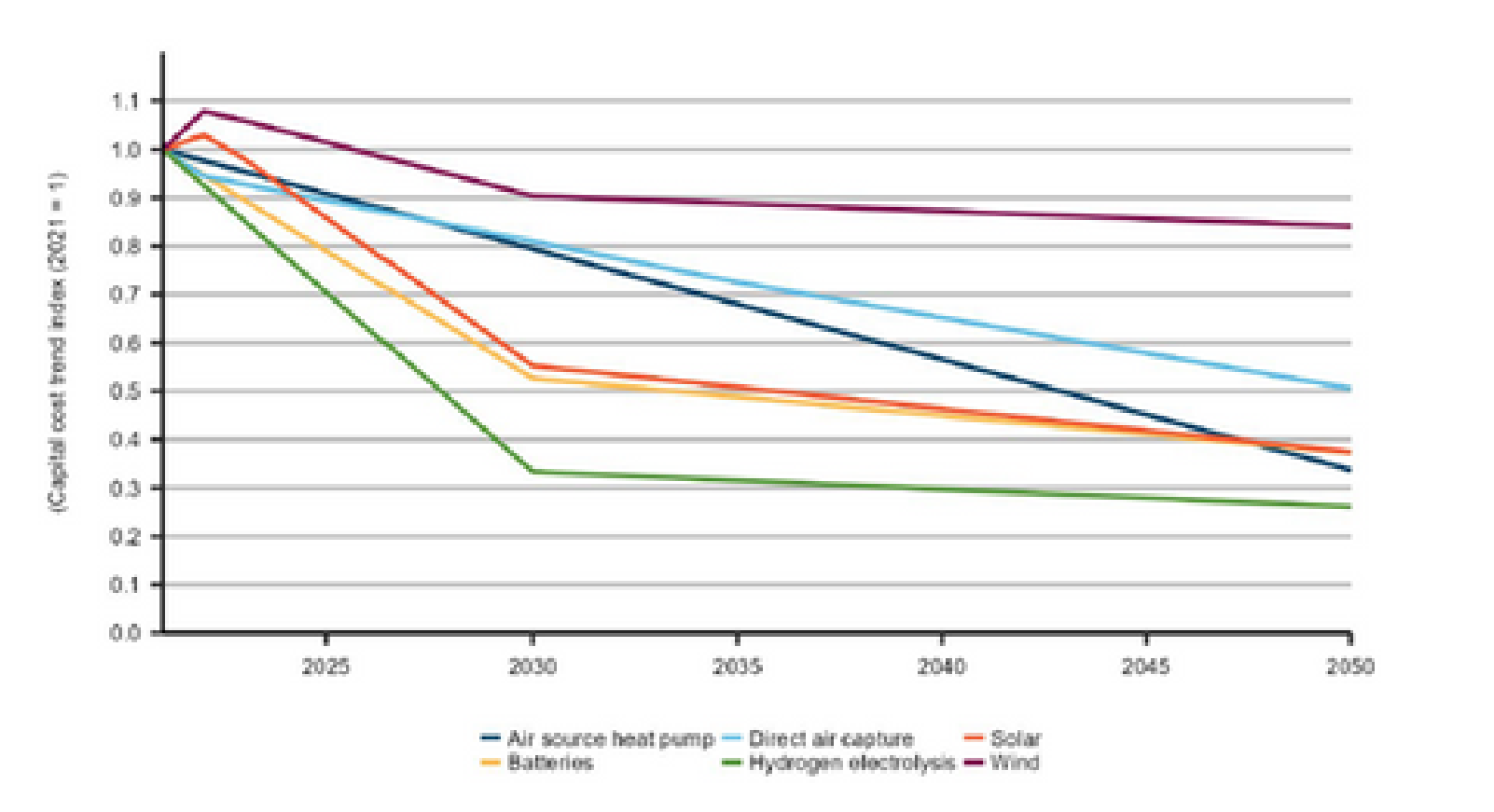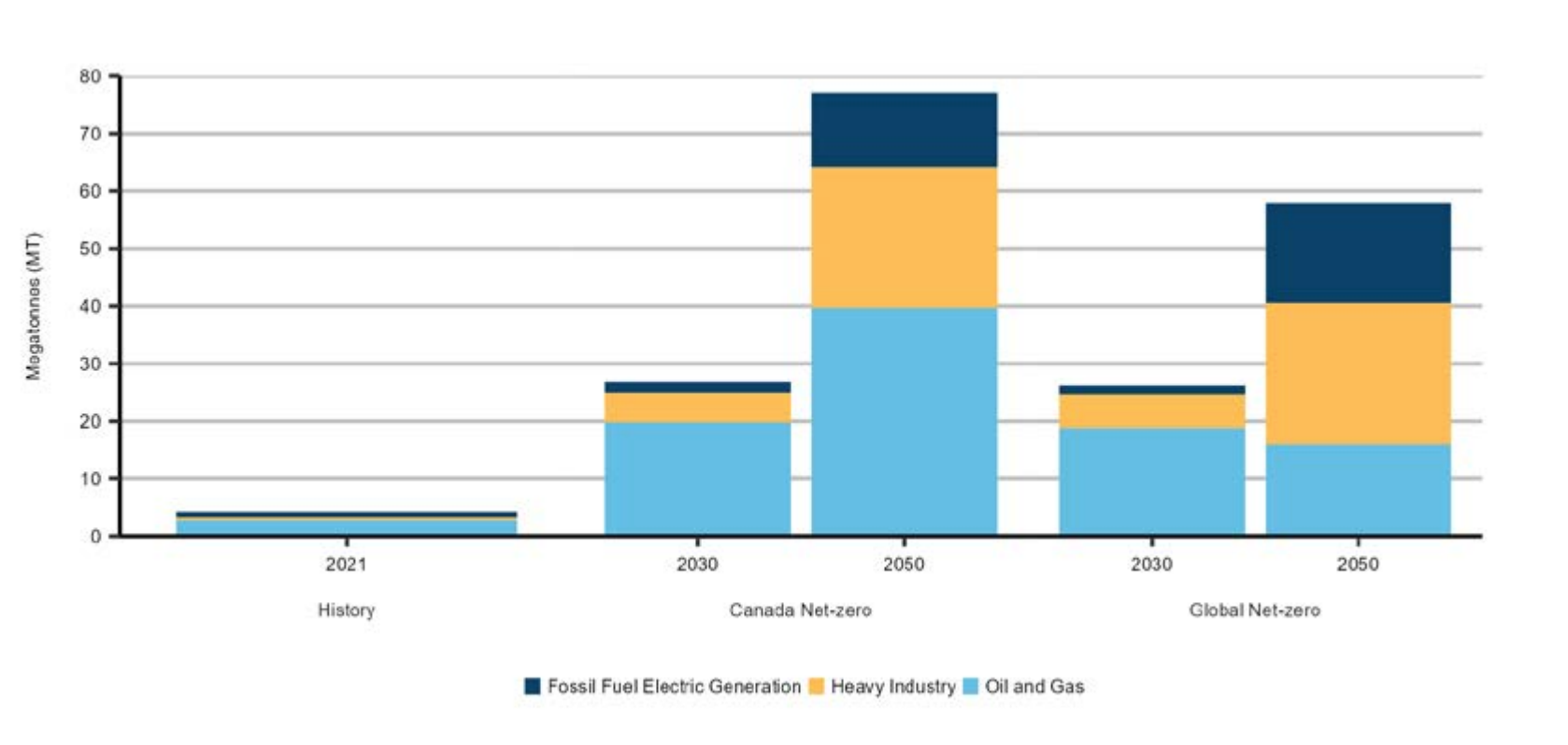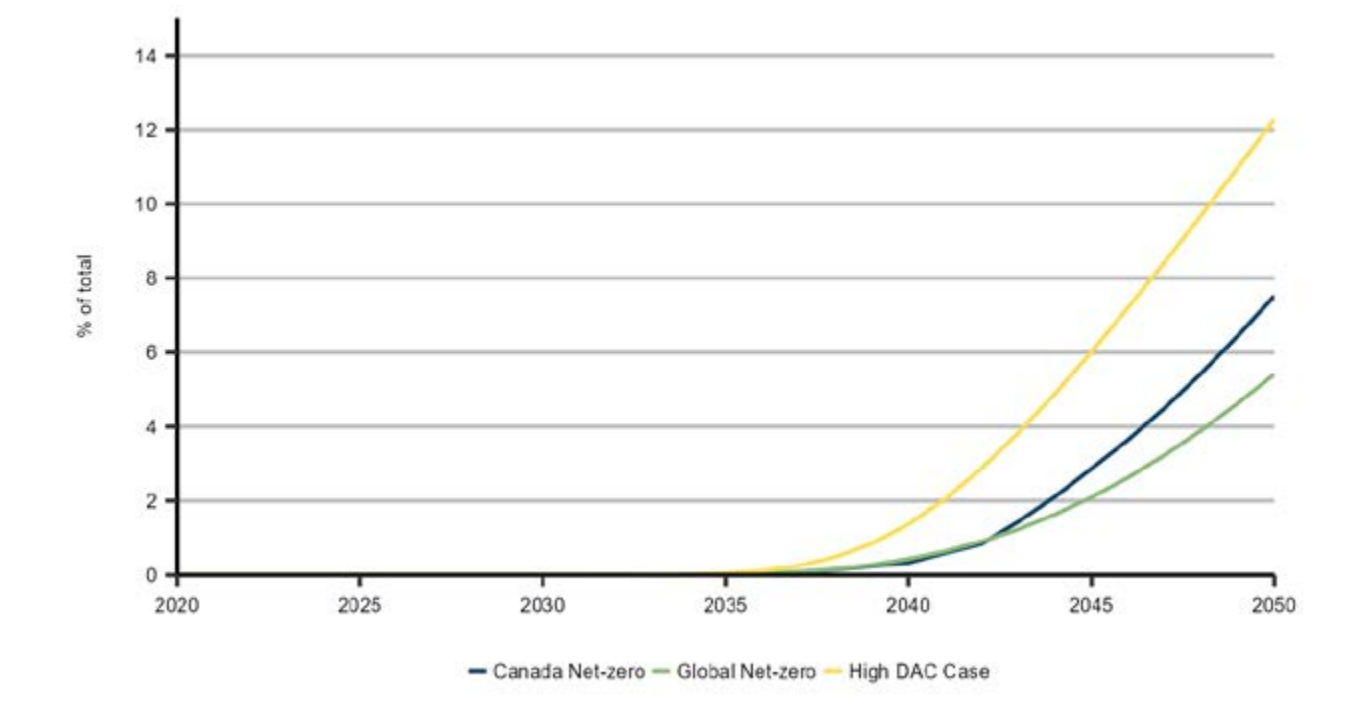
By Brad Hayes
The Canada Energy Regulator (CER) recently published Canada’s Energy Future 2023, Energy Supply and Demand Projections to 2050 which "explores how possible energy futures might unfold for Canadians over the long term.” The CER is a respected organization, and the report does a very good job of explaining the work that was done and the various outcomes that were generated. I enjoyed reading it (no, really) because its genesis, methodologies, and results are so clearly laid out.
What kind of reactions did the report get from interested organizations and media? Here’s a sampler:
- Energy Future 2023 aligns with what authoritative organizations like the International Energy Agency have published for years — that the global energy transition is underway and gaining momentum. The world – and Canada – are headed to net zero. The questions that remain are about the pace of that transformation, and how prepared Canada is to take advantage of the opportunities in a netzero economy.” (Energy Future 2023 report charts ineviotable global energy transformation, Pembina Institute)
- “This is a significant milestone for the Government of Canada,” says Nichole Dusyk, senior policy adviser, International Institute for Sustainable Development (IISD). As can be expected with any scenario that models ambitious global action to limit climate change, it shows declining Canadian oil and gas production.” (The Canada Energy Regulator’s First 1.5 degree Scenario is an Important Milestone)
- The Globe and Mail did not attempt to analyze, but simply summarized talking points from the report: “The report … outlines three scenarios: global net-zero, Canada net-zero and the continuation of current measures. But the agency emphasized that the scenarios aren’t predictions about the future or policy recommendations but sketches of Canada’s possible energy future.” (https://www.theglobeandmail.com/business/articlecanadian-electricity-demand-surge/)
- The National Post was similarly low key and did not attempt to dig into detail: “Canada Energy Regulator chief economist Jean-Denis Charlebois told reporters the three scenarios laid out are models, not forecasts, and the regulator has not made any predictions about which is most likely to become reality.” (Canada’s oil output would plummet in 2050 in a netzero world, new modelling shows)
So Canada’s Energy Future 2023 did not make a big splash – not nearly the impact the International Energy Agency’s Net Zero by 2050 report did in 2021. The IEA report had a very similar mission, and was advertised as “A Roadmap for the Global Energy Sector”, even though it turned out to be hardly that (What the International Energy Agency is actually telling us).
But Canadians should not take the CER report lightly, as it was created to be an important advisory piece supporting federal government climate policy development. Federal Minister of Natural Resources Jonathan Wilkinson requested that the CER undertake scenario analysis consistent with Canada achieving net-zero emissions by 2050, including three specific tasks:
- Include fully modelled scenarios of supply and demand for all energy commodities in Canada
- Be consistent with a global context in which the world achieves its Paris Accord goal of limiting warming to 1.5°C
- Consider relevant uncertainties, including future trends in low-carbon technology and energy markets
Let’s take a closer look at Canada’s Energy Future 2023 to understand how it is built and what it tells us.
First, the approach: “We begin with the end goal in mind – netzero GHG emissions in 2050 – and use our models to identify pathways to that point” (page 16). Think about that – the exercise must end at net-zero GHG emissions, with no consideration given as to whether that goal is even physically possible. CER said their approach:
“… begins with running the Energy Futures Modelling System with an initial set of assumptions. Once complete, we look at the resulting GHG emissions in 2050. If our projections do not result in net-zero emissions by 2050, we alter our hypothetical future climate policy assumptions and re-run our models. With each additional model run, we alter the policy assumptions, resulting in higher or lower GHG emissions. We repeat this process until the outcome of the model is consistent with net-zero GHG emissions by 2050.” (page 30)
This means “climate policy” is the sole determinant of outcomes. There is no consideration of real-world issues such as the time it takes to approve and build a new hydro project, or how many new wind and solar projects can actually be tied into the grid, or how the economic impacts of shutting down oil and gas production would be managed. The pre-determined end game is net zero, and the only tools we can use are policies such as carbon pricing to drive the desired behaviours that would hypothetically achieve the goal.
Models created by engineers and scientists to guide fundamental research, resource development, or project management are generally built on an entirely different premise (and climate models are built on similar principles).
For example, I can build a model of a new helium discovery by creating a computerized representation of the reservoir volume and populating it with key properties such as porosity, permeability, fluid saturations, reservoir thickness, and lateral heterogeneities and discontinuities. The values I would use are hard data and interpretations derived from wells and seismic data, and are conditioned by well-known relationships. I would apply uncertainty ranges to each parameter reflecting reasonable best- and worst-case scenarios within the constraints of the available data – e.g., could my porosity be as low as 8%? Or as high as 12%? – and I would run the modelling program hundreds or thousands of times while varying the input values to give me reasonable estimates of how much helium exists and how quickly the wells could deliver it.
Once I start producing helium from the wells, I can measure flow rates and other parameters to test my model – and I can make scientifically reasonable adjustments to my input parameters so that the model better represents the real-world outcomes – a process called history matching.
Let’s say my model indicates there are 2 million cubic metres of helium that could be produced at an expected rate of 1,000 cubic metres per day.
But my boss says, no, this discovery has to produce ten million cubic metres of helium at a rate of 10,000 cubic metres per day, because that is our target. I might be able to tweak my model to give them that forecast – but it will almost certainly be proven wrong as soon as we begin production, because I would have to assign unreasonable values to the model parameters to achieve the pre-determined outcome.
By the same logic, creating an energy model that has to meet a pre-determined outcome of net-zero emissions by varying only climate policy parameters is extremely unlikely to result in outcomes – such as amount of wind power generated or capacity of carbon storage reservoirs – that are within reasonable ranges.
Back to the CER report. It actually runs three scenarios:
- Global Net-Zero: rapid global climate action, with Canada and the world achieving the Paris Agreement goal of limiting warming to 1.5°C.
- Canada Net-Zero: Canada reaches net-zero emissions by 2050, but the world moves less quickly.
- Current Measures: no additional measures to reduce GHGs beyond those in place today. In this scenario, CER does not target net-zero emissions by 2050.
As the Globe and Mail and National Post reporters observed, the scenarios are not meant to be predictions, but visualizations of possible energy futures for Canada under different conditions. One can argue that there is no realistic scenario included – i.e., that there are additional emissions regulations enacted before 2050, but that they do not achieve Canadian net-zero.
Let’s cut to the chase – what results do we see from CER’s models of the three scenarios? It’s a 130-page report, so I have chosen just a few examples:
- Figure 1 shows future capital costs for selected technologies under the global net-zero scenario. Note that the costs to build “green” hydrogen electrolyzers, solar power facilities, and batteries plummet over the next seven years to 32% to 53% of today’s costs, while costs for wind power, direct air capture (DAC) of CO2, and air-source heat pumps also fall, although less extremely.
Figure 1 – Capital cost trends for select technologies under the global net-zero scenario. All figures are taken from Canada’s Energy Future 2023

In reality, the price of solar and wind have risen in the past year. Hydrogen electrolysis is a long-established technology, so why would the price plummet so drastically in a few years? At a time when supply chains, particularly critical minerals, are threatening most renewable energy tech (Critical minerals to play major role in emerging technologies), how can we believe forecasts of dramatic cost declines?
None of these capital-cost projections is reasonable, but the modelling procedure dictates them.
2. The two net-zero scenarios rely on dated International Energy Agency (IEA) forecasts of global oil and gas demand to back their assumption that Canadian oil production will fall. Global oil demand is forecast to be 75 million barrels/day (MMBOPD) in 2030 (compared to about 100 MMBOPD today) – but IEA’s recent Oil 2023 report projects 105 MMBOPD in 2028.Global natural gas demand is projected to fall 20% by 2030 in the net-zero scenarios, but in reality demand is rising steadily today, and LNG import terminals are being built rapidly in Europe and Asia to access liquefied natural gas from a growing list of exporters.
Figure 2 – GHG emissions captured and permanently stored from fossil fuel combustion and industrial processes, global and Canada net zero scenarios.

Figure 3 – Negative emissions from direct air capture, as a percentage of total GHG emissions in 2005.

3. Sequestration (storage) of CO2 in underground reservoirs (CCS) is projected to contribute significantly to the net-zero-by2050 equation for Canada. Figure 2 shows that about 27 megatonnes (Mt) of emissions will be captured and stored annually by 2030, and between 58 and 77 Mt annually by 2050 in the two net-zero scenarios.
Figure 3 projects that direct air capture (DAC) will capture CO2 directly from the atmosphere after 2035, amounting to 46 Mt of CO2 per year in the global net-zero scenario, and 55 Mt/year in the Canada net-zero scenario. Any of those volumes captured that could not be utilized to make carbon-based products such as synthetic fuels would have to be sequestered underground as well, adding to the CCS volumes.
However, Canada’s two operating sequestration facilities today (Quest and Aquistore) can store less than 2 Mt/year, primarily from coal-fired generation and blue hydrogen production in Saskatchewan and Alberta. More sequestration will likely be built in these provinces by 2030.
Yet Figure 2 shows 5‑6 Mt/year storage by 2030 from heavy industry, which is located in other parts of the country where CCS potential has not yet even been established – so that is not going to happen. Canada’s ability to build more than 100 Mt/yr of carbon sequestration capacity over the next 27 years is highly questionable given our knowledge of potential reservoirs and regulatory issues.
These are just a few select examples – there are many more. CER modelling says these are routes to net-zero emissions and adequate energy supply by 2050. But are any of them reasonable, let alone feasible? Hard evidence suggests that none of the outcomes discussed above can reasonably be expected to happen. But remember – CER modelling is not designed to address reasonableness – it simply shows us what needs to happen to achieve net-zero goals, whether reasonable or not.
To sum up, Canada’s Energy Future 2023 lays out possible pathways to Net Zero GHG emissions by 2050 in Canada, much as the IEA’s Net Zero by 2050 report did globally. Both reports assume the final (net zero) outcome, then adjust inputs to show what is required to get there – as opposed to sensible modelling exercises that use reasonable distributions of inputs to test the outcomes that might reasonably be achieved from the input data.
The CER report methodology generates many highly unlikely to practically impossible situations – massive changes in energy supply and utilization without consideration of supply chain, social, economic, or technical hurdles that would be encountered. Perhaps worst of all – no certainty that security and affordability of energy supply could be maintained for all Canadians.
Canada’s Energy Future 2023 is a political document to promote reduced GHG emissions. It is not a suitable foundation for creation of Canadian energy policy.